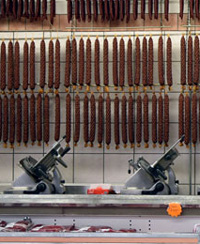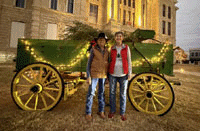Front Page
-
We have so much to be thankful for this Christmas season. The vote of confidence you continue to provide by supporting North Texas e-News has allowed us to share this endeavor with you for more than 23 years now.
-
Honeycomb salami at Fischer's Meat Market in Muenster, Texas. Think of it as a trip to the Hill Country, minus the trip and, well, there really aren't any hills, either, come to think about it. What you will find in Muenster, Texas is a little bit of Bavaria just south of Red River.
-
Fannin County employees and residents would like to thank David and Janie Herrington for displaying their wagon on the courthouse lawn.
-
There are empty chairs at thousands of tables for Texas families devastated by deadly drunk driving crashes. As Texans gather to celebrate this time of year, the Texas Department of Transportation (TxDOT) is urging Texans to extend their well-known kindness and courtesy to others on the road and always choose a sober ride.
-
Everything that goes down your drains or toilet ends up in pipes, pumps, treatment plants, and eventually back to local streams and lakes, where we get our drinking water.
-
Christmas is an annual festival commemorating the birth of Jesus Christ, observed primarily on December 25 as a religious and cultural celebration among billions of people around the world. A liturgical feast central to Christianity, Christmas preparation begins on the First Sunday of Advent and it is followed by Christmastide, which historically in the West lasts twelve days and culminates on Twelfth Night. Christmas Day is a public holiday in many countries, is observed religiously by a majority of Christians, as well as celebrated culturally by many non-Christians, and forms an integral part of the annual holiday season. The traditional Christmas narrative recounted in the New Testament, known as the Nativity of Jesus, says that Jesus was born in Bethlehem, in accordance with messianic prophecies. When Joseph and Mary arrived in the city, the inn had no room, and so they were offered a stable where the Christ Child was soon born, with angels proclaiming this news to shepherds, who then spread the word.




















